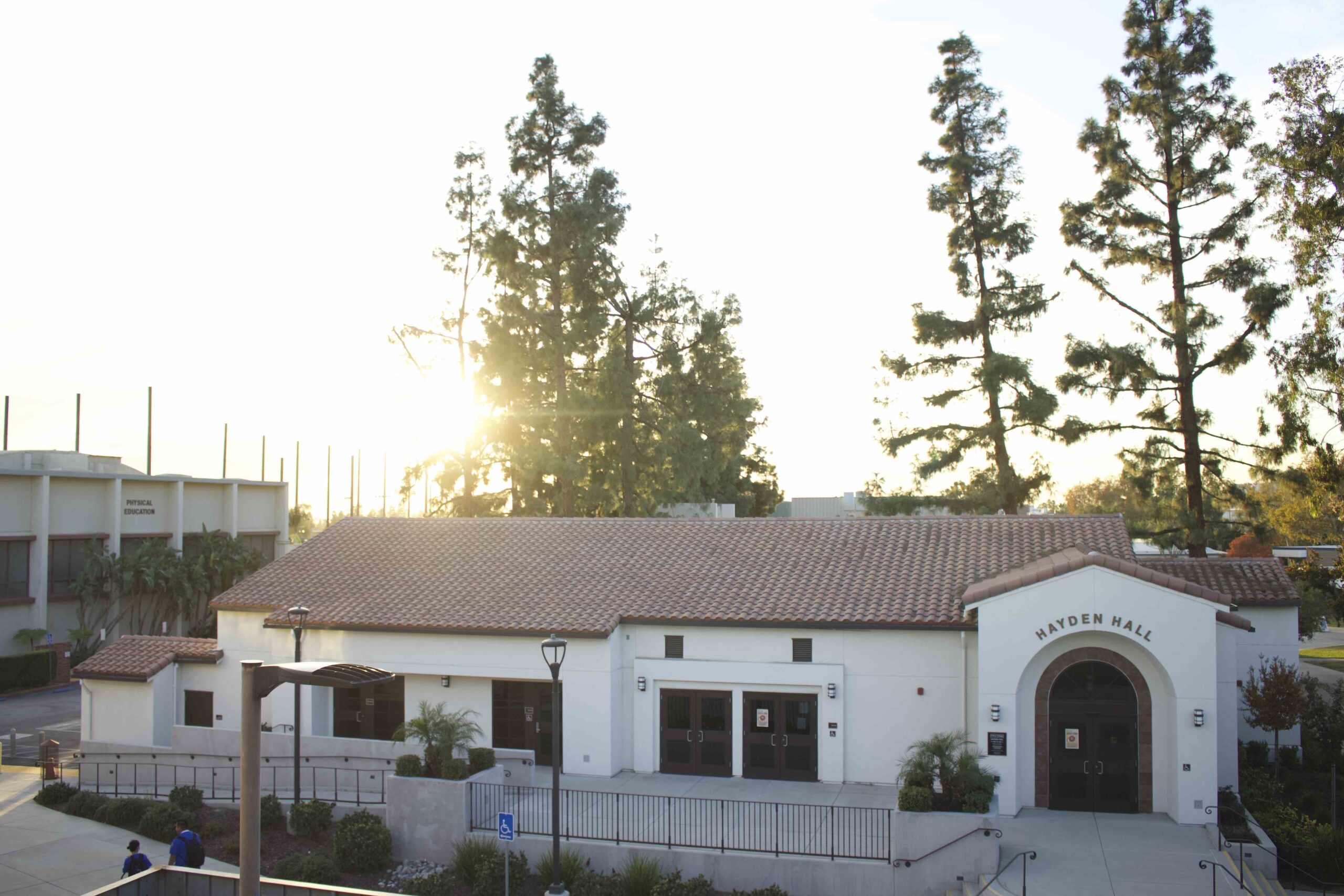Frida Kahlo Springs Eternal in Home Turned Museum
Four years following her death, the house was converted into a historic house and art museum for Kahlo’s home and life’s work to be appreciated.
When I arrived at the museum, I saw a bright blue house that looked like any other rustic Mexican home. But it was not just any house, it was the home of my favorite artist and I crossed its threshold with excitement.
I could not believe I was finally going to be inside of Kahlo’s home. I was thrilled with just the idea of knowing I was going to walk on the same floors she did.
Thankfully I only waited in line for 10 minutes because I purchased my tickets online. I highly recommend this option, because visitors arriving without tickets had a long wait to purchase them and were not guaranteed entry.
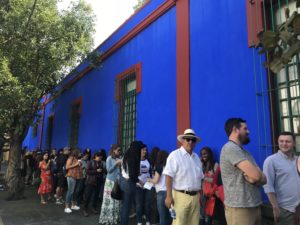
The entry line for the museum at 8:46 a.m. on Sept. 8 in Coyoacán, Mexico City.
Kahlo’s 1904 home is a traditional Mexican house distinguished by its bright cobalt blue color. The house has 10 rooms and is about 8,611 square feet and the courtyard is an additional 4,305.
Kahlo was proud of her Mexican heritage. Her house was a reflection of that, filled with bright and vibrant colors on every wall and decorated with indigenous ceramics. The interior was left intact when it was converted into a museum in 1958 by Kahlo’s friend, Mexican poet Carlos Pellicer.
Walking through her home felt like I was walking inside one of her paintings, and I immediately recognized her influence. Everything was infused with the essence of Kahlo that I had grown to love.
My favorite spaces in La Casa Azul are Kahlo’s studio and the courtyard. In her studio, I saw all her paints, brushes, tools next to the wheelchair she required. I was in the studio of a magnificent artist, and her presence was extremely strong in this particular room compared to the others.
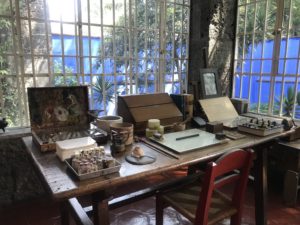
Frida Kahlo’s desk with materials and tools she used to paint on Sept. 8.
At 18, Kahlo was a passenger in a trolley car crash that lodged a metal handrail into her abdomen. The trauma left her with several fractures in her spine and pelvis. Kahlo had to undergo 32 surgeries. These injuries put a stop to her pre-med career, leading her to painting.
Even though Kahlo had physical limitations, they never stopped her. The walls of the museum quote her saying “who needs feet when I’ve got wings to fly.” Her oeuvre is a reflection of this sentiment.
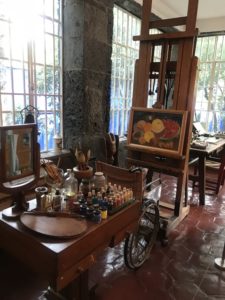
Kahlo’s studio with easel, painting utensils and wheelchair at 9:31 a.m. on Sept. 8 in second floor of La Casa Azul, Mexico.
The walls in her studio were built with local volcanic stones. In 1946, Kahlo’s husband Diego Rivera asked Mexican artist and architect Juan O’Gorman to build his wife’s studio. Rivera proposed the use of volcanic rock from the area to represent the Aztecs that used the material for their pyramids and ceremonies. Kahlo and her husband lived in this home from 1929 to 1954.
I saw the view of her garden that inspired so many of her paintings from Kahlo’s studio. In the botanical gardens of the courtyard, I completely forgot I was in Mexico City. Surrounded by all the nature and fresh air, I couldn’t believe Kahlo and Rivera created this peaceful paradise.
I see the pride in Kahlo and Rivera’s Mexican heritage. They built a culturally inspired Aztec pyramid in their garden and had many pre-Columbian statues above and around the courtyard to express the indigenous culture of the Americas before the arrival of Columbus. The house originally had European elements, but the couple rid the property of any Western influence.
Kahlo has many pieces featuring animals as subjects or her face superimposed on their heads. It was clear that the wildlife in her garden were not just animals to her, but her pets. Monkeys, dogs, birds and deer were known to pass through. She had a personal jungle right behind her home.
Viva la vida (1954) is my favorite painting of Kahlo’s. I cannot say why I find it so captivating. There is just something about those watermelons painted at odd, differing angles and cuts. It might be because it was Kahlo’s last painting. Eight days before she died, her final touch would the carved phrase “viva la vida” into one of the slices.
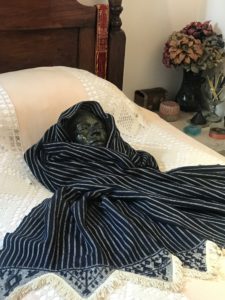
Kahlo’s bedroom and place of death. The death mask rests atop the bed at 9:35 a.m. on Sept. 8 in the second floor of La Casa Azul, Coyoacán, Mexico.
By the end of my journey in the museum, there was an exhibition titled “Appearance Can be Deceiving: The Dresses of Frida Kahlo.” This contained her dresses, corsets, jewelry and some orthopedic devices discovered in her bathroom in 2004.
I saw her unique style in the garments she wore and the colors she favored. It was not all fashion, and one reason why Kahlo dressed so particularly was to hide her body and orthopedic devices with long skirts. It was so vivid and personal. I understood another part of her identity.
Kahlo’s works featured in the museum are Portrait Of My Father (1954), Self portrait in a Velvet Dress (1926), Marxism Will Give Health to the III (1954), Still life (1942) and Frida And The Cesarean Operation (1932).
The works of Diego Rivera are also featured. These include Seated Woman (1915), Landscape (1911), Urban Landscape (1916) and The Alarm Clock (1914). Also La Quebrada, his 1956 painting dedicated to Kahlo two years after her death.
I look at all her paintings with her life on display and see the physical pain she suffered. La Casa Azul is more than just a museum. It explored the world of a great artist and highlighted her most significant work. The whole house was a piece of art. There is far more than just paintings to be admired.
Ticket: $10.64 (200 pesos)
Picture Permit: $1.60 (30 pesos)
Video Guide: $4.25 (80 pesos)
Total: $16.49 (310 pesos)

